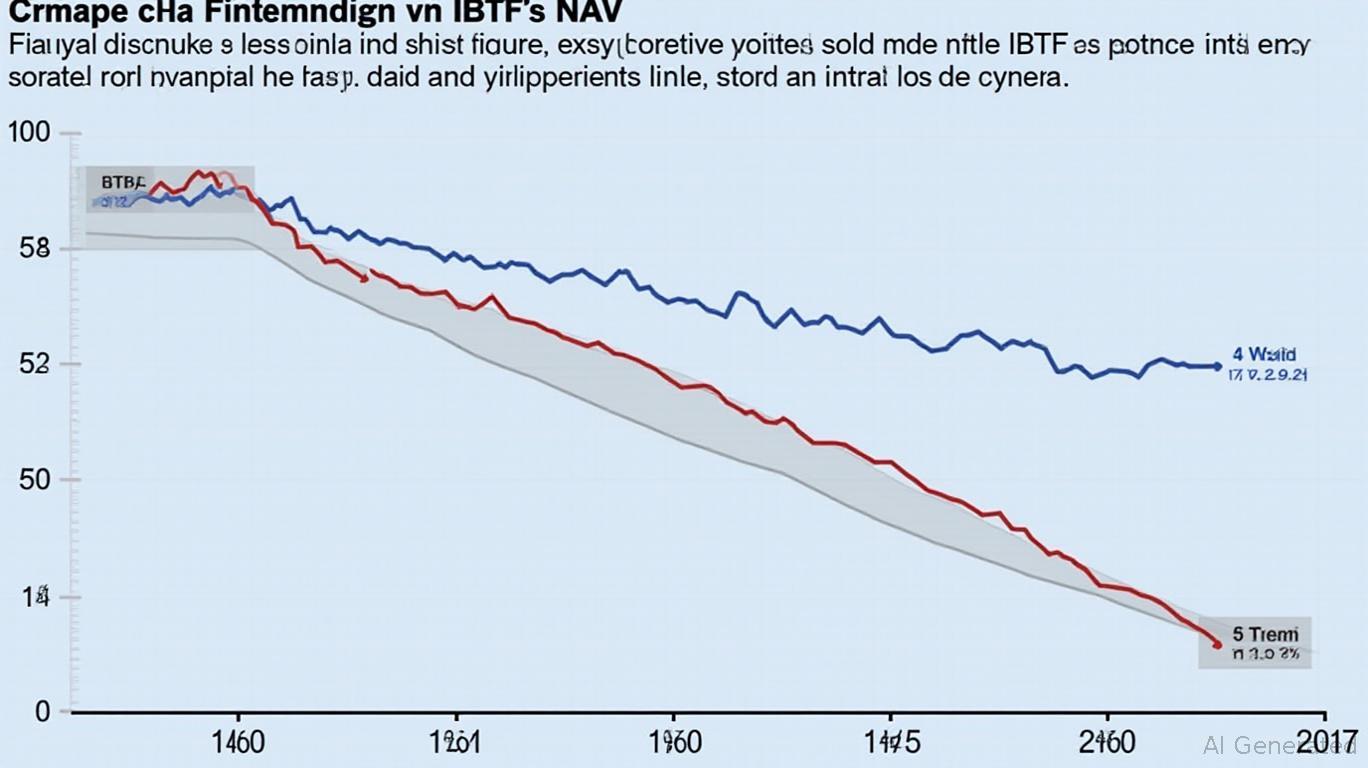The IBTF Opportunity: Capturing Treasury Returns Before the Clock Runs Out
As the Federal Reserve's high-rate environment persists, income-seeking investors face a narrowing window to secure fixed returns in a volatile market. The iShares iBonds Dec 2025 Term Treasury ETF (IBTF) stands out as a time-sensitive opportunity to lock in Treasury-backed yields before its December 2025 maturity. With its unique term structure and declining NAV dynamics, IBTF offers a structured path to income—but investors must act swiftly to capitalize before the clock runs out.

The Term Structure Advantage: A Targeted Maturity Play
IBTF is designed to hold U.S. Treasury securities maturing between January 1, 2025, and December 15, 2025, creating a portfolio with a precise expiration date. This structure ensures investors receive principal and interest as bonds mature, with proceeds reinvested in short-term cash equivalents until the fund's liquidation. Unlike perpetual bond funds, IBTF's defined maturity date provides clarity in a market where interest rate uncertainty dominates.
The fund's low expense ratio of 0.07%—nearly half the category average—further amplifies returns. By avoiding the fees and risks of active management, IBTF allows investors to focus on the certainty of Treasury-backed income.
Yield Dynamics in a High-Rate Environment
IBTF's current 4.30% yield (as of late 2024) reflects the robust returns embedded in its Treasury portfolio. However, the fund's true power lies in its final-year dynamics, where yield volatility creates a time-sensitive opportunity.
As bonds mature, their proceeds are held in cash equivalents until the fund's liquidation. The yield on these cash reserves—cash equivalent yields—directly impacts the realized yield investors receive. In a high-rate environment, short-term rates could remain elevated, potentially boosting final returns. Conversely, if rates drop, the realized yield may fall below the portfolio's stated Average Yield to Maturity.
Ask Aime: Secure 2025 Treasury ETF for a 4.30% yield before it matures?
This creates a Goldilocks scenario: Investors who act now can lock in exposure to IBTF's current yield while monitoring short-term rate movements. The fund's declining NAV, driven by maturing bonds, adds urgency.
The Time-Sensitive Call to Action
The key to IBTF's value is its finite lifespan. Once the fund liquidates in December 2025, shares will convert to cash, and the opportunity to participate in its Treasury-backed income stream will vanish. Investors holding shares post-maturity will miss out on the structured yield path.
Now is the critical moment to act:
1. Lock in yields before cash equivalent yields shift unexpectedly.
2. Benefit from the fund's low fees, which preserve more of your returns.
3. Hedge against rate volatility by owning a portfolio of Treasuries, which are insulated from credit risk.
Risks and Considerations
While IBTF's Treasury holdings carry minimal credit risk, investors must monitor two critical factors:
- Short-term rate shifts: If cash equivalent yields drop below the fund's Average Yield to Maturity, the final return will be lower.
- NAV erosion: As bonds mature, the NAV will gradually decline toward its liquidation value, requiring investors to focus on total return (yield + principal) rather than NAV stability.
Conclusion: Act Before the Clock Expires
IBTF is a ticking clock—a structured fixed-income vehicle with a clear end date. In a high-rate environment, its 4.30% yield, Treasury backing, and low fees make it a compelling choice for income investors. However, the window to participate is closing fast.
The question isn't whether to invest in IBTF, but whether you can afford to wait. With its final year approaching, the time to act is now. Secure your position in this finite opportunity before the clock runs out.
Andrew Ross Sorkin's perspective: In an era of uncertainty, IBTF's defined maturity and Treasury exposure offer a rare anchor in turbulent markets. Move swiftly—time is not on your side.

Comments
No comments yet